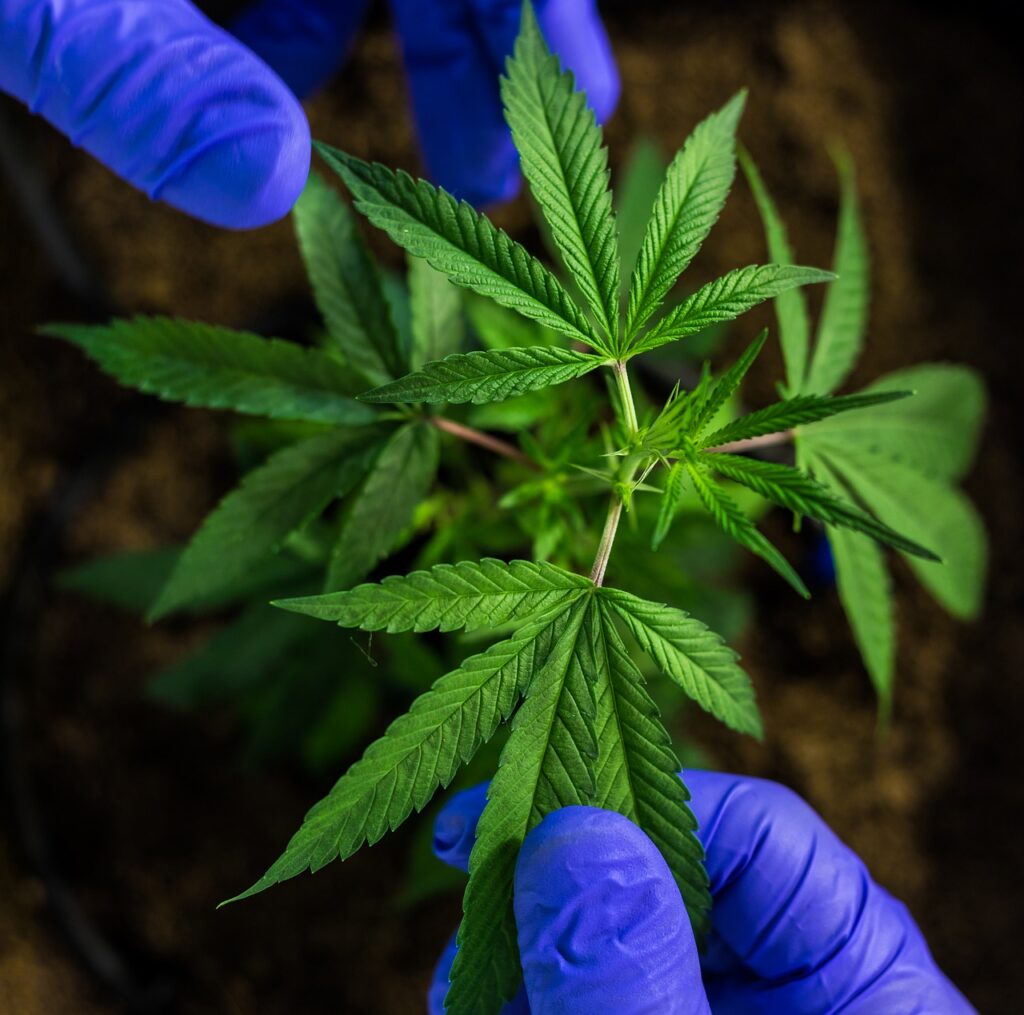Medical Marijuana

Medical marijuana can be a powerful tool to manage conditions like chronic pain, nausea from chemotherapy, multiple sclerosis, and epilepsy. You’ll find it comes in forms such as dried flower, edibles, tinctures, topicals, and capsules, each with different benefits. It works by interacting with your body’s endocannabinoid system, where THC provides pain relief and appetite stimulation, while CBD offers anti-inflammatory and anxiety-reducing effects without the high. Legal status varies, so you’ll need to check local regulations. Keep exploring to find out how medical marijuana could fit into a treatment plan and what unique options it offers.
Introduction to Medical Marijuana
Although controversial, medical marijuana has gained considerable attention for its potential therapeutic benefits. You might be surprised to learn that it’s used to alleviate symptoms of various medical conditions. For instance, if you suffer from chronic pain, medical marijuana could offer you relief that traditional painkillers haven’t provided. It’s not just about pain; it’s also used to reduce nausea and vomiting in patients undergoing chemotherapy.
You’ll find that medical marijuana also plays a role in treating neurological conditions. If you have multiple sclerosis or epilepsy, this plant could help manage your symptoms. For people with anxiety or PTSD, medical marijuana might offer a calming effect, helping you to manage your daily stresses more effectively.
When considering medical marijuana, it’s essential to understand the different components of the plant. The two main compounds you’re likely to encounter are THC and CBD. THC is the part that gives you a ‘high,’ while CBD is non-psychoactive and often used for its anti-inflammatory and analgesic properties.
History and Legal Status of Medical Marijuana
Medical marijuana has a complex history, marked by its ancient use in traditional medicine and its modern-day legal battles. You might be surprised to learn that cannabis has been used medicinally for thousands of years. Ancient Chinese texts from as early as 2700 BCE detail its applications for pain relief and other ailments.
Fast forward to the 19th century, and you’ll find Western medicine taking an interest, with cannabis featured in various pharmacopeias.
However, the 20th century brought significant changes. The Marihuana Tax Act of 1937 in the United States effectively made cannabis illegal, stalling its medicinal use. You’d have to wait until the 1990s for a shift in public perception and legislation. California led the way in 1996, becoming the first state to legalize medical marijuana with Proposition 215. Since then, many states have followed suit, though federal law still classifies marijuana as a Schedule I drug.
You’re navigating a landscape where legality depends largely on where you live. Some countries, like Canada and Germany, have nationwide medical marijuana programs, while others maintain strict prohibitions. Understanding this history can help you grasp the intricate legal status of medical marijuana today.
Types of Medical Marijuana Products
With an understanding of its history and legal status, let’s explore the various types of medical marijuana products available today. You’ll find that medical marijuana comes in several forms, each offering unique benefits and methods of consumption.
Firstly, there’s dried flower, which is the most traditional form. You can smoke or vaporize it to experience quick relief.
Edibles, such as gummies and baked goods, provide a longer-lasting effect but take longer to kick in. They’re ideal if you prefer a smoke-free option.
Tinctures are another popular choice. These are liquid extracts you can place under your tongue for rapid absorption.
If you’re looking for localized relief, consider topicals like creams and balms, which you apply directly to your skin. They’re perfect for targeting specific areas of pain or inflammation.
Capsules and tablets offer a convenient, precise dosage, making them easy to incorporate into your daily routine.
Lastly, there are concentrates, such as oils and waxes, which are highly potent and typically used with special devices like vaporizers.
Each type of product has its own advantages, so it’s crucial to choose one that aligns with your medical needs and lifestyle preferences.
How Medical Marijuana Works
Understanding how medical marijuana works involves exploring its interaction with the body’s endocannabinoid system. This system plays a crucial role in regulating various physiological processes, including pain, mood, appetite, and immune response.
When you consume medical marijuana, its active compounds, primarily THC and CBD, interact with cannabinoid receptors located throughout your body.
THC, or tetrahydrocannabinol, is the psychoactive component that binds to CB1 receptors in your brain, producing the ‘high’ sensation. However, it’s not just about getting high. THC also helps alleviate pain, reduce inflammation, and stimulate appetite.
CBD, or cannabidiol, doesn’t produce a high but interacts with CB2 receptors found in your immune system. It helps reduce inflammation, anxiety, and seizures without the psychoactive effects.
marijuana doctors
marijuana doctor
MARIJUANA DOCTOR
MARIJUANA DOCTOR
marijuana doctor
medical marijuana
medical cannabis
medical marijuana doctor
medical marijuana doctor
medical marijuana doctor
medical marijuana doctor
medical marijuana doctor
medical marijuana card
medical marijuana card
medical marijuana card
medical marijuana card
medical marijuana card
medical marijuana patients
texas medical marijuana
texas medical marijuana
texas medical marijuana
texas medical marijuana
texas medical marijuana
texas medical marijuana
compassionate use registry
medical marijuana dispensaries
medical marijuana dispensaries
medical marijuana journey
medical marijuana journey
texas department
texas department
texas department
post traumatic stress disorder
post traumatic stress disorder
post traumatic stress disorder
qualifying medical conditions
qualifying medical conditions
qualifying medical conditions
qualifying medical conditions
qualifying medical conditions
low thc cannabis
low thc cannabis
low thc cannabis
low thc cannabis
low thc cannabis
medical conditions
medical conditions
multiple sclerosis
multiple sclerosis
multiple sclerosis
multiple sclerosis
multiple sclerosis
san antonio
san antonio
san antonio
san antonio
san antonio
alleviate symptoms
public safety
incurable neurodegenerative disease
incurable neurodegenerative disease
incurable neurodegenerative disease
compassionate use act
compassionate use act
compassionate use act
metric and imperial units
metric and imperial units
metric and imperial units
initial consultation
initial consultation
initial consultation
dallas tx
dallas tx
dallas tx
dallas tx
dallas tx
intractable epilepsy
intractable epilepsy
intractable epilepsy
amyotrophic lateral sclerosis
amyotrophic lateral sclerosis
amyotrophic lateral sclerosis
potential benefits
medical marijuana doctors
A marijuana doctor specializes in assessing patients to determine if they qualify for medical cannabis use. These professionals provide recommendations and guidance on how to use cannabis for therapeutic purposes ensuring patients receive the appropriate treatment for their conditions. Their expertise helps patients navigate the complexities of medical cannabis laws and usage.
medical marijuana doctors
medical marijuana doctors
medical marijuana doctors
medical marijuana doctors
well being
low thc
low thc
physician
physician
physician
physician
physician
texas
texas
texas
texas
texas
marijuana doctors
marijuana doctors
marijuana doctors
marijuana doctors
marijuana doctors
doctor
doctor
doctor
doctor
doctor
prescription
prescription
prescription
prescription
prescription
access
access
access
access
access
qualify
qualify
qualify
qualify
qualify
specific needs
specific needs
specific needs
specific needs
specific needs
cannabis
cannabis
cannabis
cannabis
cannabis
dallas
dallas
dallas
dallas
dallas
treatment
treatment
treatment
treatment
treatment
patient
patient
patient
patient
patient
pay
pay
pay
pay
pay
education
education
education
education
education
benefits
benefits
benefits
benefits
benefits
marijuana
marijuana
marijuana
marijuana
marijuana
request
request
request
request
request
medicine
medicine
medicine
medicine
medicine
evaluation
evaluation
evaluation
evaluation
evaluation
telemedicine
telemedicine
telemedicine
telemedicine
telemedicine
consult
schedule
schedule
schedule
schedule
schedule
medications
medications
approved
doctors
doctors
doctors
doctors
doctors
cancer
cancer
cancer
cost
cost
cost
cost
cost
home jump left
home jump left
home jump left
dallas texas
legal
legal
legal
visit
visit
visit
visit
visit
city
city
ailments
person
person
person
person
person
benefit
concerns
concerns
